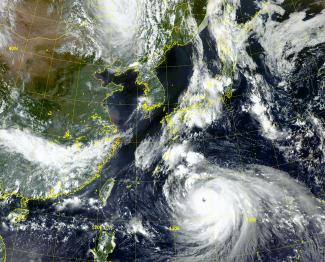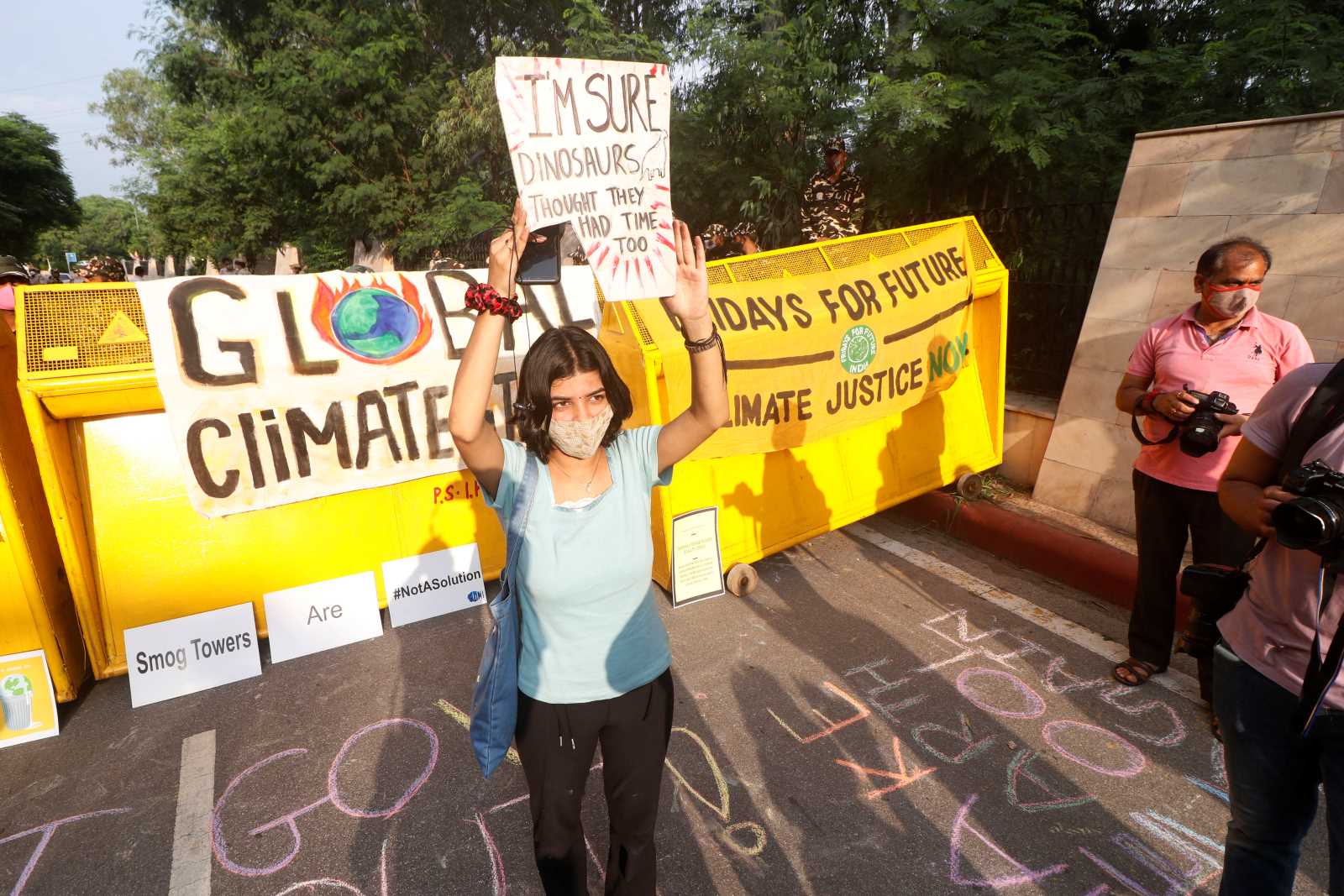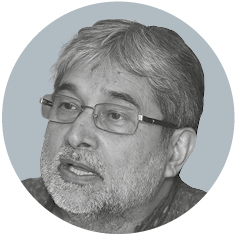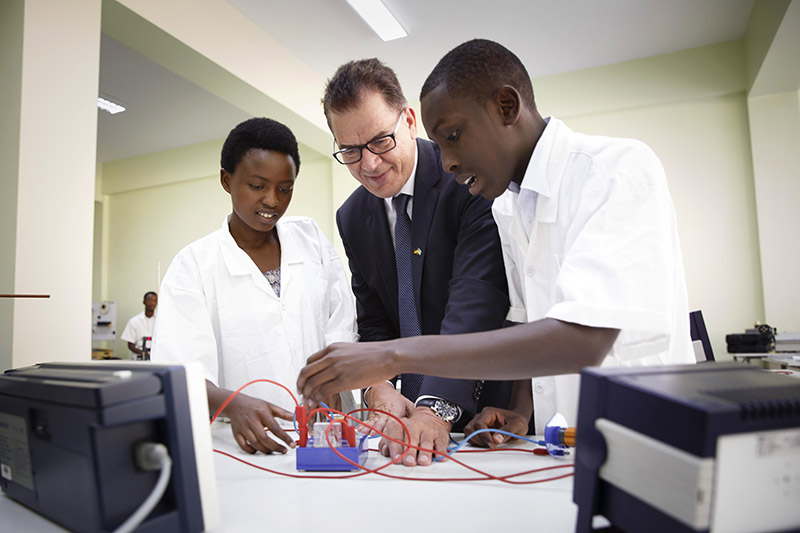UNDP
After Covid-19 pandemic, "build forward better"

In a D+C/E+Z interview in 2010, you emphasised the need to take action to tackle climate change and the loss of biodiversity. What does it tell us that matters are worse today, not better?
It means that we are not moving fast enough. However, we are getting a lot of things done – some of those achievements would have seemed almost impossible back in 2010. The leaders of all major economies are setting – or are considering – dates to achieve net-zero carbon emissions. Some of the most important emitters want to achieve carbon neutrality by the year 2050. Today, a country like Germany gets over one-third of its electric power from renewable sources. 10 years ago, that ratio was still science fiction. Humankind has begun to truly decouple carbon emissions from economic growth. Now is the time to become more ambitious and go much faster.
What about biodiversity?
The sad truth is that we have made much less progress when it comes to getting a grip on the loss of habitats and the extinction of species. That is partly because the protection of biodiversity and ecosystems is complex where local specifics matter greatly. That makes it more difficult to define a global policy framework. Moreover, our present economic systems essentially attribute a “zero value” to the net loss of biodiversity. So, we should not be surprised that our economies continue to treat nature as a free good instead of a public good. That approach has to change before we can see any significant change in current trends. The good news is that the lessons learned in responding to the climate crisis will most likely be applicable to the action we now need to take to protect and restore our planet’s biodiversity and ecosystems.
Carbon emissions have gone down because of Covid-19. Is this a blip or sustainable change?
We cannot expect that there will be any kind of automatic recalibration of the global economy in terms of carbon emissions after the pandemic. One of the main lessons of the financial crisis of 2008 was that economies rebounded fast. The stock markets did well, and economic growth resumed. However, the crisis left deep, lasting scars in terms of debt and rising inequalities. This time, countries need to use this incredible window of opportunity to build forward better. The European Union “Green Deal”, the recent commitments by the new US Administration, China, Japan, Korea, and a growing number of countries all clearly point to a stronger effort to drive forward a green recovery. However, a recent study by Oxford’s Economic Recovery Project and the United Nations Environment Programme (UNEP), indicates that just 18 % of the announced recovery spending can be considered “green” to date. That should be a warning sign. There is a tendency to go back to where we were before, rather than to pivot forward. This is a critical moment – and we now need to help countries to fully embark on a pathway to a greener, more sustainable future.
In contrast to prosperous nations, the fiscal space of low- and middle-income countries is quite restricted. Can they build forward better?
Sovereign debt is a serious and growing problem in many countries. It is undermining economic stability. It also radically limits governments’ scope to invest in a green recovery from Covid-19. When the pandemic began, the group of 20 leading economies (G20) took important steps to enable developing countries to suspend servicing their debts, but its decisions so far only provide temporary relief. The underlying problem has not been solved. Indeed, a new UNDP study has analysed the fiscal and debt situation of approximately 120 developing countries – it has categorised 72 economies as “vulnerable,” of which 19 are “severely vulnerable”. And 23 of these 72 countries are not eligible for existing debt relief channels through the G20’s Debt Service Suspension Initiative (DSSI) or the Common Framework. The report argues that indebted developing economies need access to stable, low-cost finance, preceded for some by debt restructuring. In the medium- to long- term, redirecting of expenditures, increased spending efficiency and boosting domestic revenue collection are essential to regain decades of progress toward ending poverty – and to properly address the climate crisis.
The need to build infrastructure is particularly great in developing countries.
Yes, it is. In many ways, it is a “double challenge”:
- Firstly, approximately 600 million people living in Africa still do not have access to electricity. That must change.
- The second challenge is that Africa needs to put in place a new energy infrastructure that is low-carbon and compatible with the global climate response.
Doing so will bring enormous benefits. Expanding access to sustainable, clean energy will create new green jobs. It will also improve livelihoods and social mobility, gender equality, women’s empowerment, and people’s health. To achieve this, bold investment decisions are needed. However, limited fiscal space and growing debt overhangs are making it extremely difficult for any economy in the developing world to take the level of transformational investment decisions that we now need. Therefore, just as we are developing a global response to the Covid-19 crisis, we need to take a global approach to the financing of low-carbon strategies at the country-level.
But won’t national governments always prioritise their own economies?
To some extent, yes, of course. However, we live in a global economy in which the prosperity of all depends on exchange and cooperation with others. Even the world’s largest economies – the US, China and the European Union are dependent on international trade. It is a fallacy to believe that it is possible to focus only on the fate of one’s own nation, leaving the rest of the world to take care of itself. Indeed, the climate crisis proves that the world is not taking care of itself. In an unsustainable global environment, every nation will suffer. To a considerable extent, national and multilateral interests converge. Pragmatic world leaders keenly understand this reality.
Tensions between the US and China have been growing in recent years, and nationalist tendencies have been becoming stronger elsewhere too. Will the dangers of climate change have a similar benign effect as the threat of mutually assured destruction (MAD) had during the Cold War?
The leaders of the US and the Soviet Union were well aware of the futility of a nuclear war. My sense is that common sense will prevail again. President Joe Biden and President Xi Jinping have shown that they understand how devastating the climate crisis will become without global partnership on climate action. More generally speaking, climate denial is firmly in retreat amongst the top world leaders. Moreover, the experience of the Paris Climate Summit shows that both Washington and Beijing can achieve a lot by cooperating in spite of their differences. We are living in turbulent times, but there are many reasons to be hopeful for the future.
Does it make sense at all anymore to distinguish development policies from environmental ones?
No, it does not. That was, in fact, the message of the Earth Summit held in Rio de Janeiro in 1992 – otherwise known as the UN Conference on Environment and Development. It is clear that the economy, society and the natural environment are not separate spheres. What happens in one, affects the others. That is precisely why we need sustainability in both social and environmental dimensions. For instance, the World Health Organization, estimates that approximately seven million people die prematurely every year due to air pollution. This air pollution mostly results from the use of fossil fuels. This is a crystal-clear illustration of the intrinsic link between the environment and human wellbeing.
What is the UNDP doing to promote the cause?
The United Nations is committed to raising global awareness on sustainability through the 2030 Agenda and its 17 Sustainable Development Goals. For UNDP’s 2020 Human Development Report, we adjusted the Human Development Index (HDI) – which measures a nation’s health, education, and standards of living – to include two more elements: a country’s carbon dioxide emissions and its material footprint. With the resulting Planetary-Pressures Adjusted HDI – or PHDI – a new global picture emerges, painting a less rosy but clearer assessment of human progress. For example, more than 50 countries drop out of the very high human development group, reflecting their dependence on fossil fuels and material footprint. This was an important innovation, and the feedback received has been promising, including from policymakers and international institutions.
Are you involved in climate negotiations in a more narrow sense?
Yes, we are. Two years ago, the UNDP Climate Promise was launched – our commitment to support at least 100 countries to enhance their national climate targets under the Paris Agreement – known as Nationally Determined Contributions (NDCs). Today, we are working with 118 countries to make their NDCs more technically robust and include new ways that governments can step up their climate actions, as well as finance these bold new goals. The Climate Promise is the world’s largest offer of support for the enhancement of countries’ climate pledges. Spelling out meaningful NDCs is not simply about counting emissions – it is more complex. For NDCs to work, governments need to have a good understanding of – and solid plans for – transportation, electric power generation, industrial development, social services and so on. Indeed, awareness of climate change issues is increasingly permeating policymaking in general. The simple truth is that humankind will either share a low-carbon future or have no future at all. An increasing number of people understand this harsh truth.
What difference does it make that central banks have begun to discuss climate issues?
Central banks are increasingly important players, partly because they are confronted with two trends. On the one hand, the ever more visible impacts of climate change have introduced a new degree of risk that central banks need to take into account. At the same time, they are recognising the incredible benefits associated with investing in a green, sustainable future.
It is noteworthy, moreover, that debate on these matters is going on at the international-level.
Yes, the most important forum is probably the Network for Greening the Financial System. It includes all major central banks and financial regulators from around the world. And, it is no accident that the IMF and the European Central Bank have shown unprecedented leadership on these matters given that they are both led by two women who are at the forefront of global efforts to progressively align global climate action efforts with our financial systems.
Achim Steiner is the Administrator of the United Nations Development Programme (UNDP).
www.undp.org















